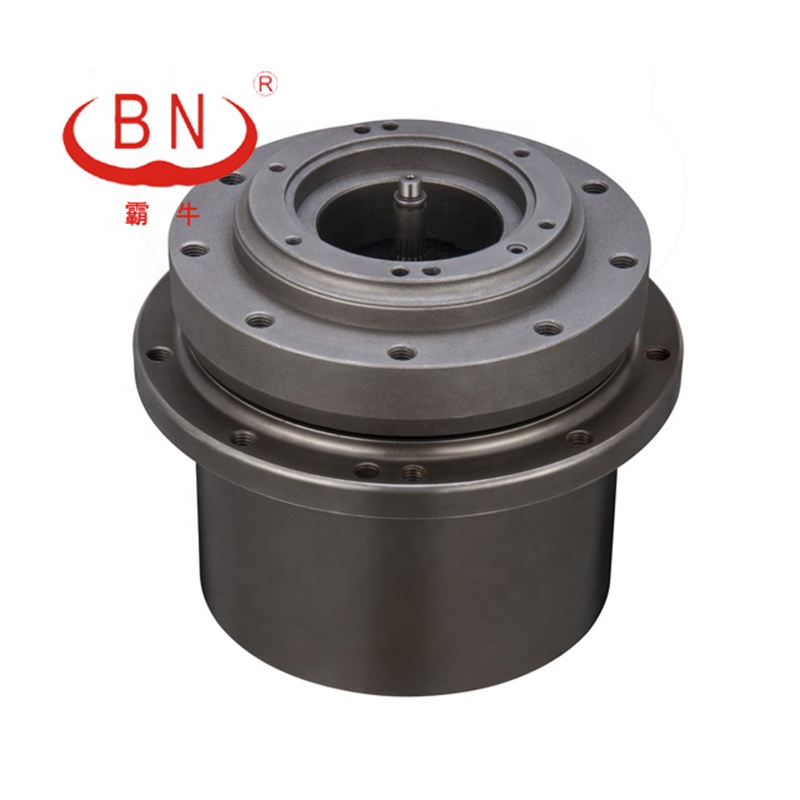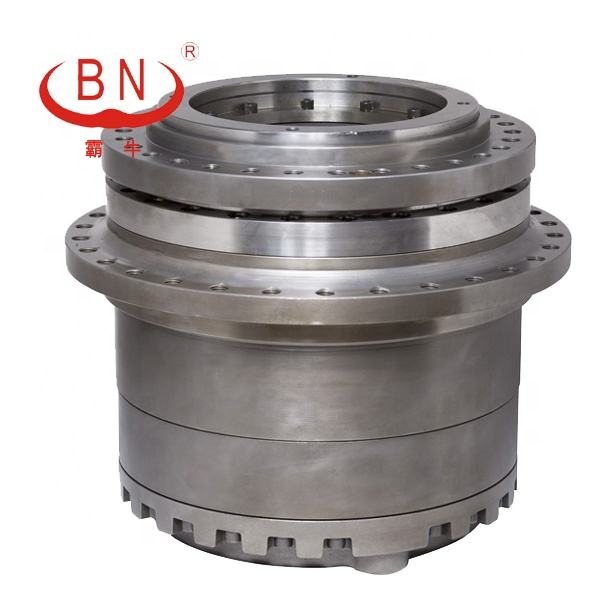Excavators are a staple in construction and mining industries, offering unparalleled versatility in digging, lifting, and moving heavy materials. To keep these machines running efficiently, it is crucial to perform regular inspections and tests of their parts and functions. One of the most important components to understand and maintain is the excavator's final drive. This article explores the essential aspects of operational checks for excavators, details what a final drive is, and explains how these components work.
What Parts and Excavator Functionsexcavator final drive Do You Inspect and Test During Operational Checks?
Performing operational checks on an excavator involves inspecting and testing various parts and functions to ensure the equipment is in good working condition. The following are key components and functions to focus on:

Engine and Hydraulic Systems
Engine Inspection: Check the engine for signs of wear or damage, including any unusual noises or vibrations. Ensure there are no leaks and that oil levels are within the acceptable range. Examine the air and fuel filters, and replace them if necessary. Verify that the engine's cooling system is functioning correctly to prevent overheating.
Hydraulic System Check: The hydraulic system powers the excavator's arm, bucket, and other attachments. Inspect hoses, fittings, and cylinders for leaks, cracks, or wear. Ensure hydraulic fluid levels are adequate, and check for contamination or air in the hydraulic fluid.
Boom, Stick, and Bucket
Boom and Stick Inspection: Look for any signs of structural damage, cracks, or excessive wear on the boom and stick. Test the movement and alignment of these parts to ensure they operate smoothly.
Bucket Check: Inspect the bucket for any damage, including cracks, dents, or worn teeth. Ensure the pins and bushings connecting the bucket to the arm are intact and free of excessive wear.
Undercarriage
Track and Roller Inspection: Check the tracks for wear, tension, and alignment. Look for any missing or damaged track pads. Inspect the rollers, idlers, and sprockets for signs of wear, damage, or misalignment.
Frame and Final Drive Check: Examine the undercarriage frame for any signs of cracks or structural damage. The final drive should be inspected for leaks, unusual noises, or excessive play in the drive sprockets.
Electrical and Control Systems
Electrical Components: Inspect the battery terminals for corrosion, check all wiring for signs of wear or damage, and ensure all lights and indicators are functioning correctly.
Control Systems: Test the operation of the excavator’s control systems, including the joystick, pedals, and other controls. Ensure the control functions respond accurately to inputs without any lag or difficulty.
Operational Safety Systems
Emergency Stops and Alarms: Test all emergency stop functions, alarms, and other safety systems to ensure they are operational.
Cabin Safety: Check the condition of the seatbelt, fire extinguisher, and first aid kit. Ensure that the cabin is free from obstructions that could impede operator visibility.
Lubrication and Maintenance Points
Greasing and Lubrication Points: Inspect all points that require regular lubrication, such as pivot points on the boom, stick, and bucket. Make sure that these points are well-greased to prevent wear and damage.
Regular inspection and testing of these excavator parts help maintain safety and efficiency on-site. Neglecting any of these checks can result in equipment failure, costly repairs, and even accidents.
What Is the Final Drive of an Excavator?
The final drive is a crucial component of an excavator's powertrain, playing a vital role in the machine's movement and maneuverability.

Definition of the Final Drive
The final drive, also known as a planetary gear reduction unit, is the last stage in the power transmission from the engine to the tracks or wheels of an excavator. It consists of a set of gears (usually planetary gears), shafts, bearings, seals, and a hydraulic motor that drives the tracks. The final drive converts the hydraulic power generated by the excavator’s main pump into mechanical power, which propels the tracks and allows the machine to move forward, backward, or turn.
Components of a Final Drive
A typical excavator final drive consists of the following main parts:
Hydraulic Motor: Converts hydraulic fluid pressure into rotational motion.
Planetary Gear System: Provides torque multiplication, allowing the excavator to achieve high torque at low speeds.
Ring Gear and Carrier Assembly: Houses the planetary gears and helps in distributing the load.
Output Shaft: Transfers the rotational force from the final drive to the sprockets that move the tracks.
Bearings and Seals: Support the rotation of the shafts and prevent dirt, debris, and hydraulic fluid from leaking.
Importance of the Final Drive
The final drive is essential for maintaining the proper speed and torque of the excavator's movement. It ensures the machine can handle various terrains and loads without slipping or losing power. Without a functional final drive, an excavator would not be able to move effectively, leading to downtime and decreased productivity on construction machinery parts sites.
How Do Excavator Final Drives Work?
To understand how excavator final drives work, it is important to look at the power transmission process from the engine to the tracks.

Power Flow in an Excavator Final Drive
Hydraulic Power Generation: The excavator's engine drives a hydraulic pump that generates high-pressure hydraulic fluid. This fluid is directed to the hydraulic motor within the final drive.
Hydraulic Motor Activation: The hydraulic motor converts the hydraulic fluid pressure into mechanical energy. This energy is transmitted as rotational motion through the motor's output shaft.
Torque Multiplication by Planetary Gears: The rotational motion is passed through a series of planetary gears inside the final drive. The planetary gear system multiplies the torque generated by the hydraulic motor while reducing the rotational speed. This process ensures that the excavator has enough torque to move heavy loads or operate on steep inclines without losing traction.
Transmission to Output Shaft: The multiplied torque is transferred to the output shaft, which is connected to the drive sprocket. The drive sprocket then rotates the excavator's tracks, propelling the machine forward, backward, or enabling it to turn.
Control and Directional Changes
Excavator final drives also allow for precise control and directional changes. Operators can manipulate the hydraulic controls to adjust the flow and pressure of hydraulic fluid reaching the final drive motors. By varying the flow, operators can control the speed and direction of the excavator’s movement. For example, to turn the excavator, the operator can increase the flow to one side's final drive while reducing it to the other side, causing the machine to pivot.
Brake and Hold Functions
Most final drives come equipped with a braking system that prevents unintended movement when the excavator is not in operation. This brake system is typically spring-applied and hydraulically released. When the operator releases the controls, hydraulic pressure drops, and the brake engages automatically, holding the excavator in place.
Efficiency and Performance Optimization
The planetary gear design in the final drive enhances efficiency by maximizing the output torque relative to the input power. This design reduces the amount of power lost through heat and friction, making the final drive highly efficient in converting hydraulic energy into mechanical work.
Conclusion
Excavator final drives are vital components that play a significant role in an excavator’s overall performance. Regular operational checks and maintenance of all parts, especially the final drives, ensure that these powerful machines continue to function effectively and safely. By understanding the importance of each component, such as the hydraulic systems, undercarriage, electrical controls, and final drives, operators and maintenance personnel can prevent downtime, reduce repair costs, and enhance productivity.
For high-quality final drive components and other excavator parts, consider BN Gears products. Their robust and reliable parts are designed to withstand the harshest conditions and deliver superior performance. For more information or to place an order, contact BN Gears at info@hx-machinery.cn or vivian@hx-machinery.cn
By investing in the right parts and committing to regular maintenance, you can extend the life of your excavator and ensure it operates at peak performance.
excavator final drive
excavator parts
construction machinery parts
 English
English












